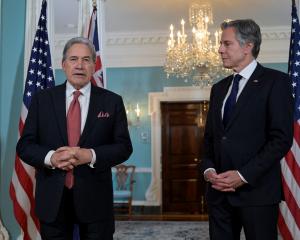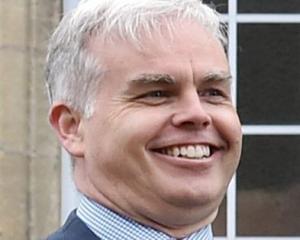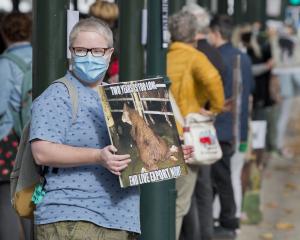It conjures up images of, "You dirty rat, I'm going to rub you out," with the camera panning to a picture of a gangster scrubbing a large rat with a brush in a bucket of soapy water.
For the musically inclined, George Formby's Chinese Laundry Blues is surely but subliminally all about concealing the profits from opium dealing.
Money laundering is a means to disguise the source of criminal loot. Drug dealing, organised prostitution, illegal arms sales, smuggling and car-theft rings can generate huge sums of ill-gotten gains.
Business crimes of embezzlement, insider trading, bribery and computer fraud schemes can also produce large profits and the villain has to disguise all that cash through money laundering.
Criminals launder money by disguising the sources, changing the form, or moving the funds to a place where they are less likely to attract attention.
That process itself is against the law and you go to jail.
Let's look at the lingo.
In the placement stage, the launderer introduces illegal profits into the financial system.
This can be done by breaking up large amounts of cash into less conspicuous smaller sums that are then deposited directly into a bank account, or by purchasing a series of monetary instruments such as cheques and money orders that are then deposited into accounts at another location.
After the funds have entered the financial system the second, or "layering", stage takes place.
In this phase, the launderer engages in a series of conversions or movements of the funds to distance them from their source.
The cash might be channelled through the purchase and sales of investment instruments, or the launderer might simply Internet transfer the funds through a series of accounts at various banks across the globe.
I can just smell Capone's little bespectacled clerk doing this.
Having successfully processed his criminal profits through the first two phases of the money-laundering process, the launderer then moves them to the third stage - "integration" - in which the funds re-enter the legitimate economy.
The launderer might choose to invest his booty in real estate, luxury assets or business ventures.
However, sudden wealth in the hands of one person can attract the attention of the Police and Inland Revenue so trusts and companies are usually set up.
But in comes Elliot Ness.
There are many ways to launder money, some of which are sophisticated and complicated.
The most common examples include:"Smurfing", or structuring, involves depositing cash at various banks in amounts less than the amount that must be reported to Government, and subsequently transferring them to a central account.
You have to deal in amounts of less than $10,000.
Another method is exchanging transactions by buying foreign currency that can be transferred to offshore banks.
You can also purchase assets with bulk cash then sell them and deposit the funds. It is commonly done at casinos.
You might buy gambling chips and after placing a few bets redeem the chips for a casino cheque.
Basil Fawlty tried to pull the other side of the gambling lurk with his 75 win on Dragonfly.
Polly, so as not to give away Basil's gambling to Sybil, says she herself won it on the horse.
When Sybil asks the horse's name, Basil desperately plays charades behind Sybil's back to try to illustrate the name.
Don't try to money-launder your profits from a crime by saying you won it on a horse.
At the end of the day, the methods are pretty crude. The criminal intention appears transparent.
Reasonable inferences can be drawn from proven facts and, once discovered, the laundering process becomes pretty obvious.
His hands start to resemble those of a washerwoman of Edwardian times - which reminds me of a wonderful story from years ago in an English court, when a nervous young prosecutor informed the judge that his next witness was, "M' Lud, Mrs Winterwoman, a washerbottom from Swansea", when his witness was in fact one Mrs Winterbottom, a washerwoman from Swansea.
"A dreary occupation, I presume," remarked the judge quickly, collapsing the chamber in laughter and rendering the testimony of the witness quite ineffectual because of constant sniggering in court.
But I digress.
Four Acts of Parliament have direct relevance to money laundering.
The Crimes Act 1961, the Financial Transactions Reporting Act 1996, the Proceeds of Crimes Act 1991 and the Mutual Activities in Criminal Matters Act 1990.
The snitch Act is the Financial Transactions Reporting Act 1996, and a bank must snitch on you if certain transactions are conducted including cash transactions which exceed $9,999.99, or where money-laundering transactions are suspected.
The bank must report such activities and report certain movements of currency across New Zealand's border.
But the statute which creates the offence of money laundering is the Crimes Act 1961, section 257A.
It is a mouthful and too long to set out in full but is worth a read.
It defines concealing as "disguising or converting from one form to another" and "serious offence" as one punishable by five years' imprisonment or more.
The section then sets a maximum penalty of seven years' imprisonment for those who engage in a money-laundering transaction, knowing or believing that all or part of the property is the proceeds of any serious offence.
There are refinements within the section, but they are almost all aimed at tightening the noose around the neck of those who try to conceal criminal gains.
Jail time is almost inevitable.
The only money laundering I have been involved in was putting a copper coin in a bottle of coke many years ago. It came out bright and shiny.
That doesn't happen with the new stuff.
•Michael Guest is a former lawyer and District and Family Court Judge.












